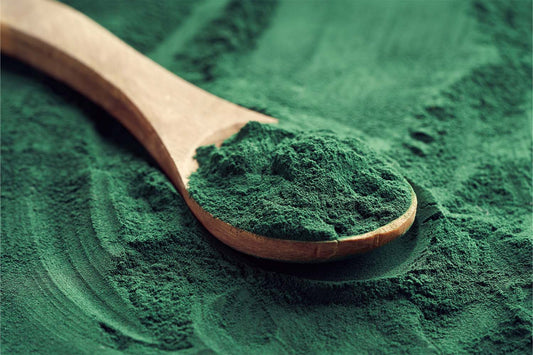Running is often celebrated for its myriad of potential health benefits, from boosting cardiovascular fitness to supporting mental health and contributing to overall wellness. Yet, a common perception persists that running, especially long-distance running, can be detrimental to your joints.
The idea is that the constant pounding of the pavement may result in undue stress on the knee joint, one of the body's most vital and complex structures — and this concern is only exacerbated by stories of seasoned runners experiencing knee pain and having to hang up their running shoes to spare their joints.
In this article, we’re unpacking the relationship between running and joint health. We’ll provide a balanced perspective as we dive into the oft-discussed runner’s knee, the science behind the connection between osteoarthritis and running, and the influence of wear and tear on knee cartilage.
By the end of the article, you’ll be equipped with the proper knowledge needed to make informed decisions about your physical activity and how to support your overall joint health.
What Is the Connection Between Running and Joint Health?

Joint health is critical for our mobility and quality of life, especially when it comes to our knees.
As the largest joint in the body, the knee is a common focus of joint health discussions, especially in relation to osteoarthritis (OA), a degenerative joint disease often associated with aging and wear and tear of joint cartilage and the underlying bone.
A key question for many, from recreational runners to marathon enthusiasts, is the potential link between their favorite physical activity and the risk of developing conditions like knee osteoarthritis. The knee is a frequent site of OA, with knee osteoarthritis being a leading cause of disability among older adults.
However, whether running contributes to the development of OA is a point of ongoing debate.
Running is a high-impact exercise, which means it puts a substantial load on the knees. Each step in a run can exert a force equal to about three times your body weight on your knees. Over time, this repetitive impact could cause wear and tear on the knee cartilage, the smooth, rubbery tissue that cushions the bones in the knee joint. The degradation of this cartilage often results in bouts of joint pain, and can increase the risk of developing OA.
However, it's crucial to note that the connection between running and OA isn't as clear-cut as it might seem. Some studies use tools like X-rays and other imaging techniques to identify the onset and progression of OA, and some results have indicated that recreational runners may actually have a lower incidence of knee osteoarthritis compared to non-runners.
For example, a 2017 meta-analysis suggested that only 3.5% of healthy recreational runners developed hip or knee OA compared to 10.2% of sedentary individuals. These findings would suggest that running, especially long-distance running, may not be as harmful to the knees as once thought, especially if done moderately and with good form.
That said, the risk of OA can increase with factors like age, previous joint injury, excessive body weight, and possibly high-intensity or long-duration running — knee arthritis can develop from the complex interplay of these risk factors.
Understanding your personal risk factors and practicing preventive measures such as wearing the right shoes, warming up properly, not overdoing your training, and taking the right supplements can help keep your joints healthy.
Can Running Lead to Knee Injuries?
As we delve deeper, it becomes evident that the relationship between running and joint health, particularly knee health, is multifaceted. Running is a high-impact activity, so it’s often associated with various knee injuries.
Knee injuries often arise from overuse – an excessive frequency, duration, or intensity of training without adequate rest and recovery. They’re also heavily influenced by factors such as running form and individual biomechanics.
The most common knee injury linked to running is patellofemoral pain syndrome. The condition is appropriately nicknamed “runner’s knee” and is characterized by pain around the kneecap (patella).
Runner’s knee can occur from excessive running, a sudden increase in mileage, improper running form, or a misalignment of the kneecap. The repetitive stress on the knee joint may lead to inflammation or irritation of the cartilage under the kneecap, causing discomfort or pain.
Another common running-related knee injury includes iliotibial band syndrome, which is pain on the outer knee caused by inflammation of the iliotibial band, a tough group of fibers running down the outside of the thigh.
The key is to pay attention to your body. If knee pain occurs, it's crucial to rest, ice the affected area, compress, and elevate the knee (the RICE protocol).
If the pain persists, seeking advice from a healthcare professional or a physical therapist should be your next step. Remember, early recognition and treatment of injuries can help prevent more serious conditions from developing.
How Can the Right Running Form and Equipment Protect Your Joints?
The biomechanics of running – the way your body moves when you run – play a crucial role in injury risk. Poor form can place undue stress on the knee joint and surrounding structures.
For instance, a pronounced inward roll of the foot (overpronation) or running with your knees too far forward can contribute to knee pain.
Running form and the use of the right equipment is fundamental in maintaining your overall joint health. Proper running form allows for efficient movement, reduces unnecessary strain on your joints, and lessens the risk of injuries. Understanding your body's biomechanics, or the way your body moves when running, can help optimize your form.
Here are a few points to remember:
- Your upper body should be relaxed but upright, leaning slightly forward.
- Aim for a midfoot strike, where your foot lands below your hip.
- Your strides should be short and light, reducing the impact on your knees.
- Keep your arms at a 90-degree angle, swinging forward and back, not across your body.
Alongside proper running form, selecting the right shoes is critical. The right running shoes provide the cushioning and support needed to absorb the shock of each footfall, reducing stress on the knees.
They should be well-fitted, comfortable, and designed for your foot type and running style. High-quality running shoes often have specific features to help with overpronation or supination, and some offer additional cushioning for high-impact running.
Insoles can also play a role in maintaining good joint health. They can provide additional shock absorption and correct biomechanical foot issues, such as flat feet, which could potentially lead to knee problems. Always remember that worn-out shoes lose their ability to provide the necessary support and cushioning, so regular replacement is essential.
How Does Strength Training Complement Running for Joint Health?

Strength training serves as an excellent complement to running. It strengthens the muscles that support your joints, thereby reducing the load on them. Moreover, strength training can help correct muscle imbalances often contributing to injuries.
For runners, the focus should be on strengthening the lower body, particularly the quadriceps (quads), hamstrings, and gluteal muscles. These muscle groups are essential for stabilizing the knee and hip joints during running.
As mentioned above, iliotibial band syndrome is a common knee injury. The iliotibial band (ITB) is a ligament that runs down the outside of the thigh from the hip to the shin. ITB tightness can lead to knee pain, so exercises that stretch and strengthen this band are crucial for avoiding potential injuries.
Cross-training activities like cycling or swimming can also help with joint health. These activities use different muscle groups, promote flexibility, and provide a break from the repetitive impact of running.
The Final Verdict: Is Running Bad for Your Joints?
Running is just like any other physical activity; it comes with risks and benefits. It's not inherently “bad” for your joints if done correctly and in moderation.
A balanced approach, integrating strength training, proper running form, and the right equipment can actually make running beneficial for your joints.
A warm-up routine before hitting the track and a proper cool down afterward can prepare your joints for the workout and lessen the likelihood of running-related injuries. For long-distance or marathon runners, the importance of these elements is even more pronounced.
Consulting with an orthopedic surgeon or a sports medicine specialist can be beneficial for those with existing joint issues, ensuring that their running routine is adapted to their specific needs. They may suggest bouts of physical therapy to help repair knee or joint injuries.
It’s important to remember that proper nutrition plays a key role in maintaining joint health. Omega-3 fatty acids, like those found in fatty fish and algae, are especially beneficial for your overall joint health. Including iwi life's plant-based omega-3 supplements in your daily routine can be a fantastic addition as it provides the nutritional support to keep your joints healthy and resilient.
Now it's time to lace up your running shoes and hit the track — your joints may thank you for it!
Sources:
Running and Jogging - Health Benefits | Better Health Channel
How Does the Knee Work? | NCBI Bookshelf
Is Running Bad for Your Knees? | Live Science
Patellofemoral Pain Syndrome (Runner's Knee) | Johns Hopkins Medicine
Iliotibial Band Syndrome (ITBS): Causes, Symptoms & Treatment | Cleveland Clinic
Disease/Condition: Overpronation: What It Is, Causes & Treatment | Cleveland Clinic



















